
6XGIZOIGR:)6/6GTJ+ZNKXTKZTKZ]UXQOTM
ASCII
American Standard Code for Information Interchange. A universal standard for encoding
alphanumeric characters into 7 or 8 binary bits.
ASIC
Application Specific Integrated Circuit
ASN.1
Abstract Syntax Notation One. An abstract syntax used to define the structure of the
protocol data units associated with a particular protocol entity.
Asynchronous
Communications where characters can be transmitted at an arbitrary unsynchronized
point in time and where the time intervals between transmitted characters may be of
varying lengths. Communication is controlled by start and stop bits at the beginning and
end of each character.
Attenuation
The decrease in the magnitude of strength (or power) of a signal. In cables, generally
expressed in dB per unit length.
Attenuator
A passive network that decreases the amplitude of a signal (without introducing any
undesirable characteristics to the signals such as distortion).
AUI cable
Attachment Unit Interface Cable. Sometimes called the drop cable to attach terminals to
the transceiver unit.
AWG
American Wire Gauge.
(
Balanced circuit
A circuit so arranged that the impressed voltages on each conductor of the pair are equal
in magnitude but opposite in polarity with respect to ground.
Bandwidth
The range of frequencies available expressed as the difference between the highest and
lowest frequencies is expressed in hertz (or cycles per second). Also used as an indication
of capacity of the communications link.
Base address
A memory address that serves as the reference point. All other points are located by
offsetting in relation to the base address.
Baseband
Baseband operation is the direct transmission of data over a transmission medium without
the prior modulation on a high frequency carrier band.
Baud
Unit of signaling speed derived from the number of events per second (normally bits per
second). However if each event has more than one bit associated with it the baud rate and
bits per second are not equal.

'VVKTJO^' -RUYYGX_
BCC
Block Check Character. Error checking scheme with one check character; a good
example being block sum check.
BCD
Binary Coded Decimal. A code used for representing decimal digits in a binary code.
BERT/BLERT
Bit Error Rate/Block Error Rate Testing. An error checking technique that compares a
received data pattern with a known transmitted data pattern to determine transmission line
quality.
BIOS
Basic Input/Output System.
Bipolar
A signal range that includes both positive and negative values.
BIT (binary digit)
Derived from ‘BInary DigiT’, a one or zero condition in the binary system.
BIT stuffing
Bit stuffing with zero bit insertion. A technique used to allow pure binary data to be
transmitted on a synchronous transmission line. Each message block (frame) is
encapsulated between two flags, which are special bit sequences. Then if the message
data contains a possibly similar sequence, an additional (zero) bit is inserted into the data
stream by the sender, and is subsequently removed by the receiving device. The
transmission method is then said to be data transparent.
Bits per sec (bps)
Unit of data transmission rate.
Block sum check
This is used for the detection of errors when data is being transmitted. It comprises a set
of binary digits (bits) which are the modulo 2 sum of the individual characters or octets in
a frame (block) or message.
BNC
Bayonet type coaxial cable connector.
Bridge
A device to connect similar sub-networks without its own network address. Used mostly
to reduce the network load.
Broadband
A communications channel that has greater bandwidth than a voice grade line and is
potentially capable of greater transmission rates. Opposite of baseband. In wide band
operation the data to be transmitted are first modulated on a high frequency carrier signal.
They can then be simultaneously transmitted with other data modulated on a different
carrier signal on the same transmission medium.
Broadcast
A message on a bus intended for all devices which requires no reply.
BS
British Standard.

6XGIZOIGR:)6/6GTJ+ZNKXTKZTKZ]UXQOTM
BSC
Bisynchronous transmission. A byte or character oriented communication protocol that
has become the industry standard (created by IBM). It uses a defined set of control
characters for synchronized transmission of binary coded data between stations in a data
communications system.
Buffer
An intermediate temporary storage device used to compensate for a difference in data rate
and data flow between two devices (also called a spooler for interfacing a computer and a
printer).
Burst mode
A high speed data transfer in which the address of the data is sent followed by back-to-
back data words while a physical signal is asserted.
Bus
A data path shared by many devices with one or more conductors for transmitting signals,
data or power.
Byte
A term referring to eight associated bits of information; sometimes called a ‘character’.
)
Capacitance
Storage of electrically separated charges between two plates having different potentials.
The value is proportional to the surface area of the plates and inversely proportional to the
distance between them.
Capacitance (mutual)
The capacitance between two conductors with all other conductors, including shield,
short-circuited to the ground.
Cascade
Two or more electrical circuits in which the output of one is fed into the input of the next
one.
CCITT (see ITU-T)
Consultative Committee on International Telegraphs and Telephone. A committee of the
International Telecommunications Union (ITU) that sets world-wide telecommunications
standards (e.g. V.21, V.22, V.22bis).
Character
Letter, numeral, punctuation, control code or any other symbol contained in a message.
Characteristic impedance
The impedance that, when connected to the output terminals of a transmission line of any
length, makes the line appear infinitely long. The ratio of voltage to current at every point
along a transmission line on which there are no standing waves.
Clock
The source(s) of timing signals for sequencing electronic events e.g. synchronous
data transfer.
CMRR
Common Mode Rejection Ratio.

'VVKTJO^' -RUYYGX_
CMV
Common Mode Voltage.
CNR
Carrier to Noise Ratio. An indication of the quality of the modulated signal.
Collision
The situation when two or more LAN nodes attempt to transmit at the same time.
Common mode signal
The common voltage to the two parts of a differential signal applied to a
balanced circuit.
Common carrier
A private data communications utility company that furnishes communications services
to the general public.
Contention
The facility provided by the dial network or a data PABX which allows multiple
terminals to compete on a first come, first served basis for a smaller number of computer
posts.
CPU
Central Processing Unit.
CRC
Cyclic Redundancy Check. An error-checking mechanism using a polynomial algorithm
based on the content of a message frame at the transmitter and included in a field
appended to the frame. At the receiver, it is then compared with the result of the
calculation that is performed by the receiver.
Cross talk
A situation where a signal from a communications channel interferes with an associated
channel’s signals.
CSMA/CD
Carrier Sense Multiple Access/Collision Detection. When two situations transmit at the
same time on a local area network, they both cease transmission and signal that a
collision has occurred. Each then tries again after waiting for a predetermined time
period. This forms the basis of the IEEE 802.3 specifications.
*
Data link layer
This corresponds to layer 2 of the ISO reference model for open systems interconnection.
It is concerned with the reliable transfer of data (no residual transmission errors) across
the data link being used.
Datagram
A type of service offered on a packet-switched data network. A datagram is a self-
contained packet of information that is sent through the network with minimum protocol
overheads.
Decibel (dB)
A logarithmic measure of the ratio of two signal levels:
Where dB = 20log10V1/V2 or

6XGIZOIGR:)6/6GTJ+ZNKXTKZTKZ]UXQOTM
Where dB = 10log10 P1/P2
And where V refers to Voltage or P refers to Power. Note that it has no units of measure.
Decoder
A device that converts a combination of signals into a single signal representing that
combination.
Default
A value or setup condition assigned, which is automatically assumed for the system
unless otherwise explicitly specified.
Delay distortion
Distortion of a signal caused by the frequency components making up the signal having
different propagation velocities across a transmission medium.
DES
Data Encryption Standard.
Dielectric constant (E)
The ratio of the capacitance using the material in question as the dielectric, to the
capacitance resulting when the material is replaced by air.
Digital
A signal, which has definite states (normally two).
DIN
Deutsches Institut für Normierung.
DIP
Acronym for dual in line package referring to integrated circuits and switches.
Direct Memory Access
A technique of transferring data between the computer memory and a device on the
computer bus without the intervention of the microprocessor. Also abbreviated
to DMA.
DNA
Distributed Network Architecture.
Driver software
A program that acts as the interface between a higher level coding structure and the lower
level hardware/firmware component of a computer.
DSP
Digital Signal Processing.
Duplex
The ability to send and receive data simultaneously over the same communications line.
Dynamic range
The difference in decibels between the overload or maximum and minimum discernible
signal level in a system.

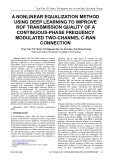
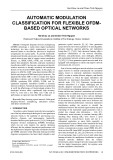

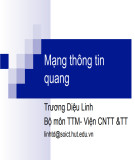

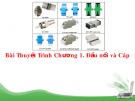
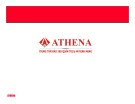
![Bài giảng Cáp mạng, vật tải truyền - GV. Lê Bá Thi [Chuẩn SEO]](https://cdn.tailieu.vn/images/document/thumbnail/2016/20160409/o0tchya0o/135x160/4531460212639.jpg)
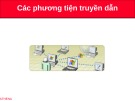
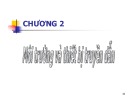



![Câu hỏi trắc nghiệm Mạng máy tính: Tổng hợp [mới nhất]](https://cdn.tailieu.vn/images/document/thumbnail/2025/20251001/kimphuong1001/135x160/15231759305303.jpg)
![Câu hỏi ôn tập An toàn mạng môn học: Tổng hợp [mới nhất]](https://cdn.tailieu.vn/images/document/thumbnail/2025/20250919/kimphuong1001/135x160/30511758269273.jpg)






![Giáo trình Công nghệ mạng không dây (Nghề Quản trị mạng máy tính, Trình độ Cao đẳng) - Trường Cao đẳng Thủ Thiêm [Mới nhất]](https://cdn.tailieu.vn/images/document/thumbnail/2025/20250916/kimphuong1001/135x160/13561758013095.jpg)



